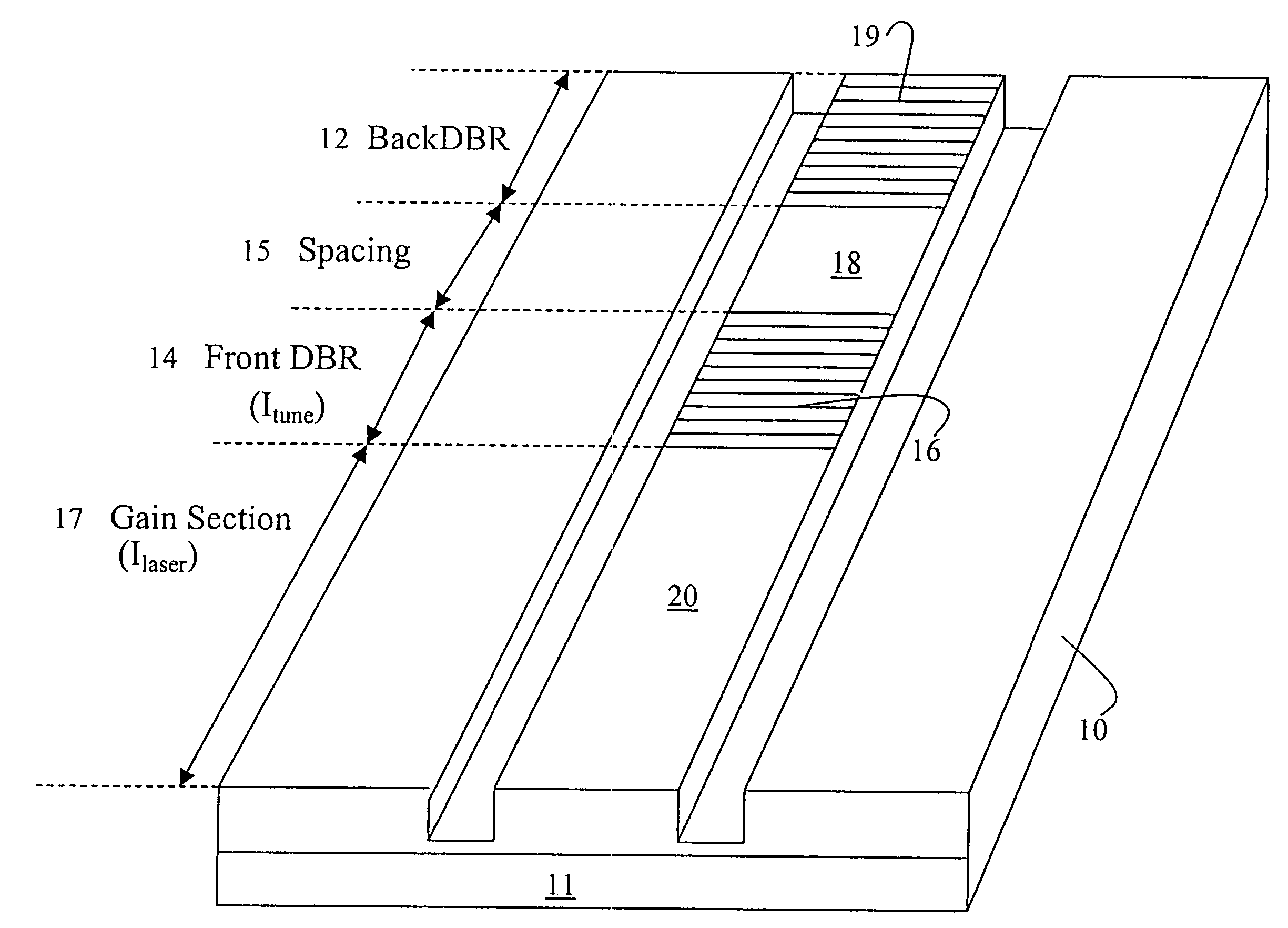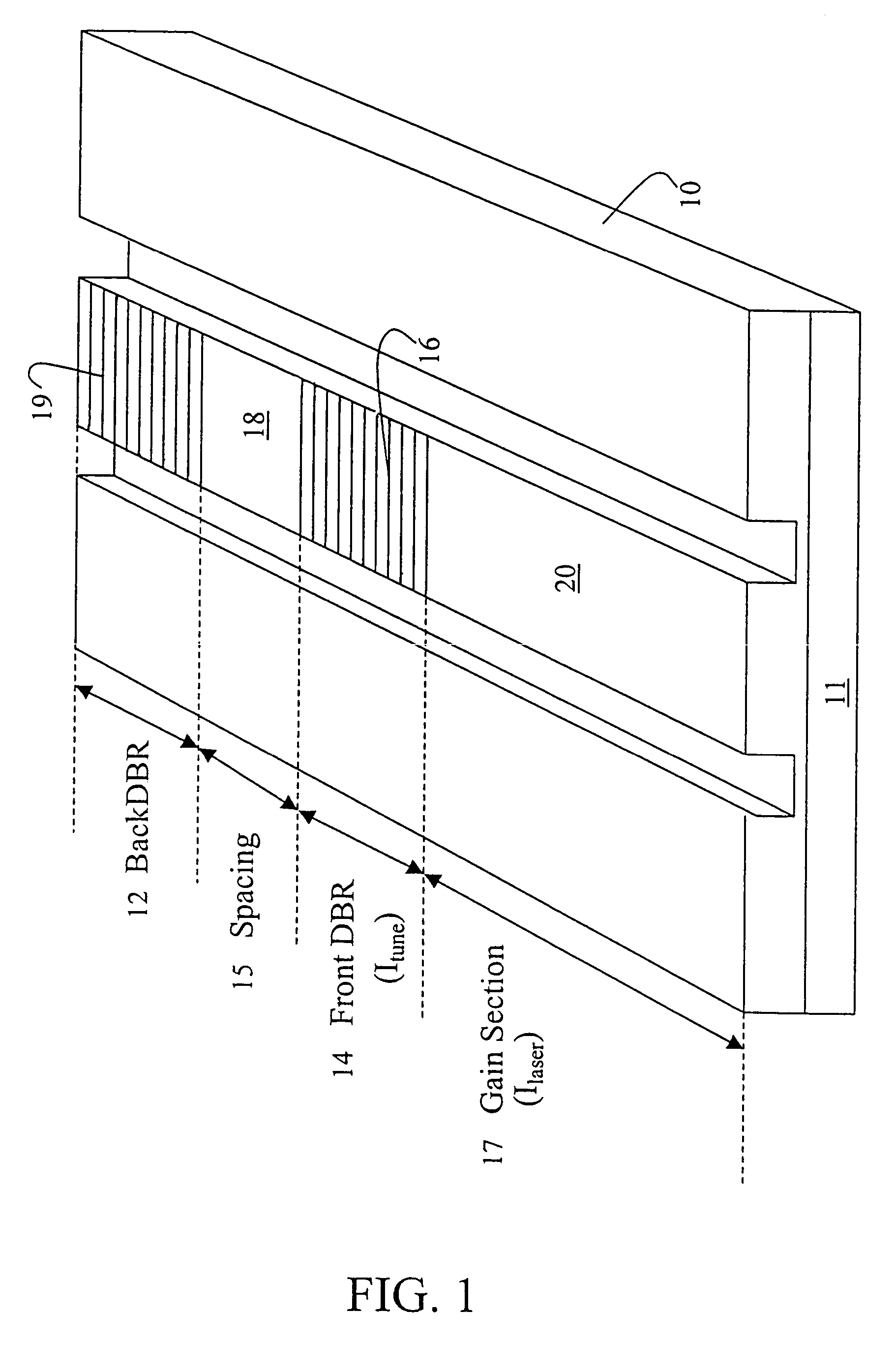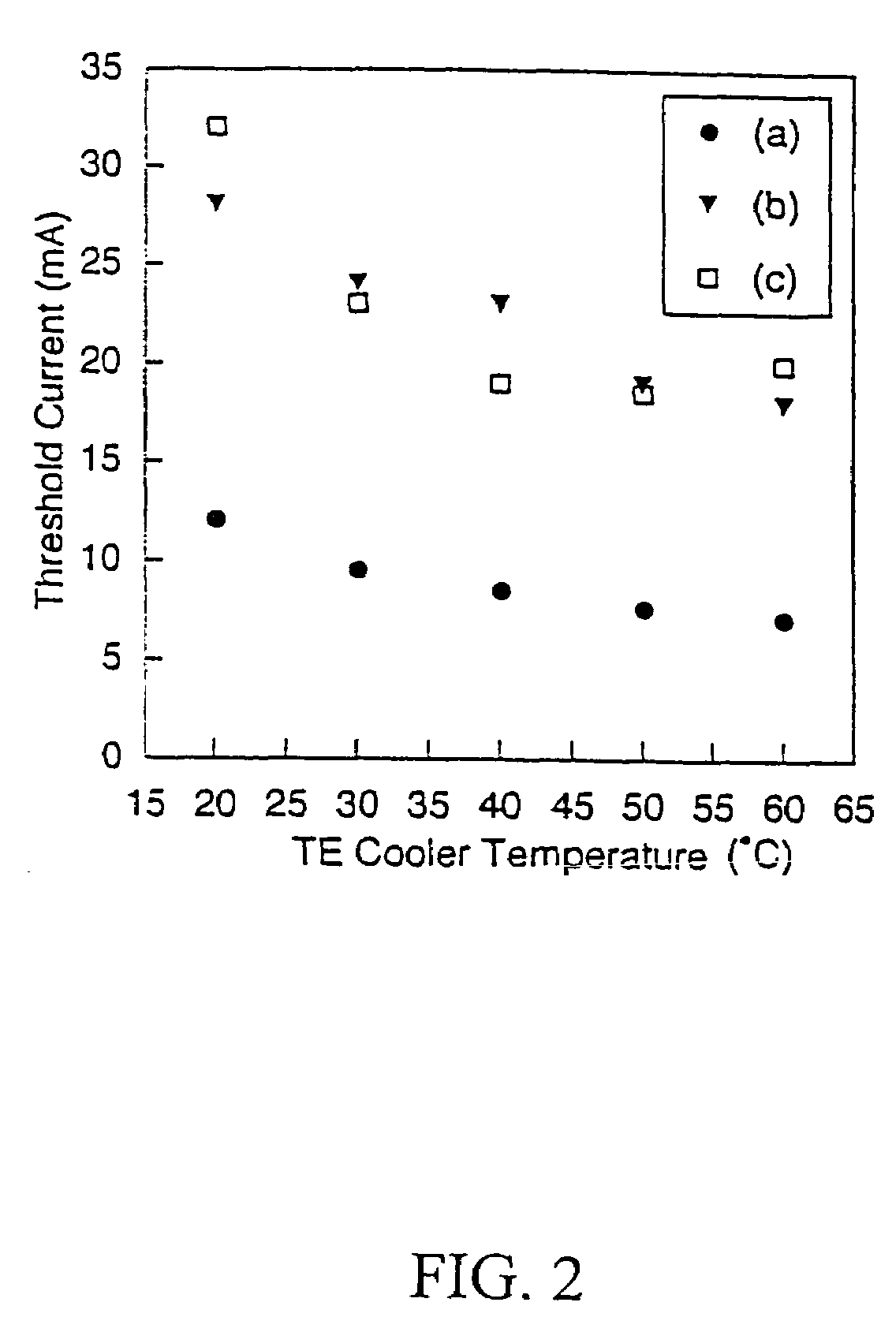Current biased dual DBR grating semiconductor laser
a semiconductor laser and current biased technology, applied in the direction of laser details, laser optical resonator construction, optical resonator shape and construction, etc., can solve the problems of large and complex chip design, difficult to select and tune a wavelength, and unaffected other wavelength(s) , to achieve the effect of reducing the added cavity loss of the back grating mode, reducing the coupling coefficient and reducing the current induced thermal interaction
- Summary
- Abstract
- Description
- Claims
- Application Information
AI Technical Summary
Benefits of technology
Problems solved by technology
Method used
Image
Examples
Embodiment Construction
[0011]Referring now to FIG. 1, a preferred ridge waveguide-distributed Bragg reflector (RW-DBR) laser heterostructure 10 of the invention is shown. The laser heterostructure emits from an output aperture 11. A rear surface distributed Bragg grating 12 is formed on a surface of said laser heterostructure. The laser also includes a front surface distributed Bragg grating 14 on a surface of said laser heterostructure. The front surface distributed Bragg grating 14 is closer to the output aperture 11 than the rear surface distributed Bragg grating 12. There is a space 15 between the rear surface distributed Bragg grating 12 and the front surface distributed Bragg grating 14. A tuning electrode 16 is formed on the front surface distributed Bragg grating 14, and the region between the front distributed Bragg grating and the output aperture 11 forms a gain section 17. A current drive electrode 18 is formed on the space 15, and a tuning electrode 19 on the rear surface distributed Bragg gra...
PUM
 Login to View More
Login to View More Abstract
Description
Claims
Application Information
 Login to View More
Login to View More - R&D
- Intellectual Property
- Life Sciences
- Materials
- Tech Scout
- Unparalleled Data Quality
- Higher Quality Content
- 60% Fewer Hallucinations
Browse by: Latest US Patents, China's latest patents, Technical Efficacy Thesaurus, Application Domain, Technology Topic, Popular Technical Reports.
© 2025 PatSnap. All rights reserved.Legal|Privacy policy|Modern Slavery Act Transparency Statement|Sitemap|About US| Contact US: help@patsnap.com



